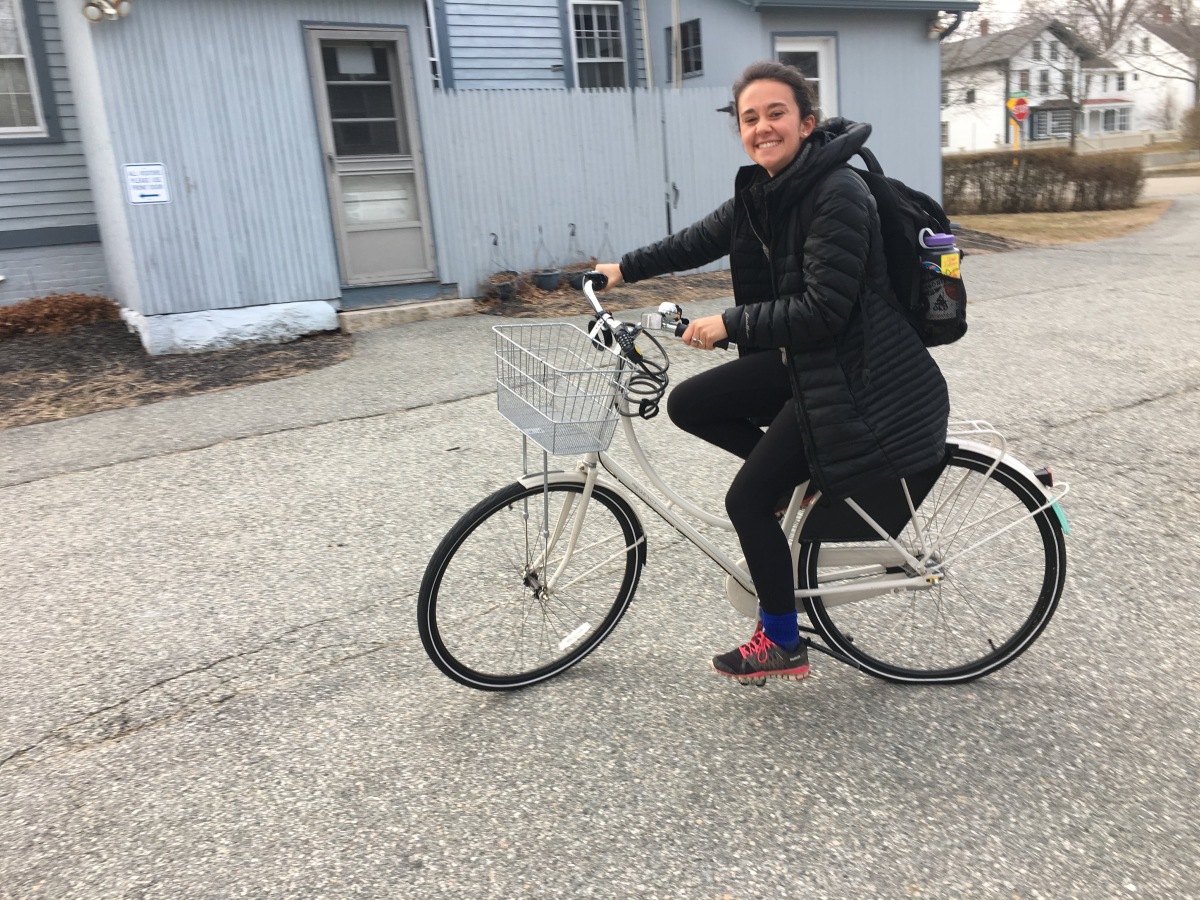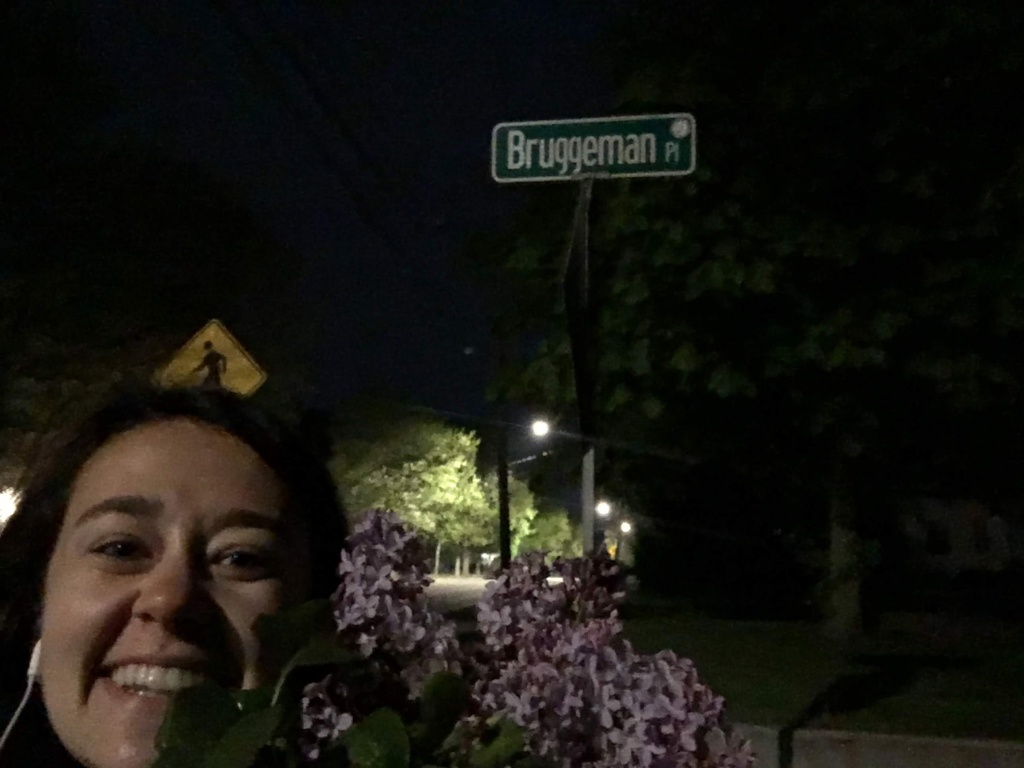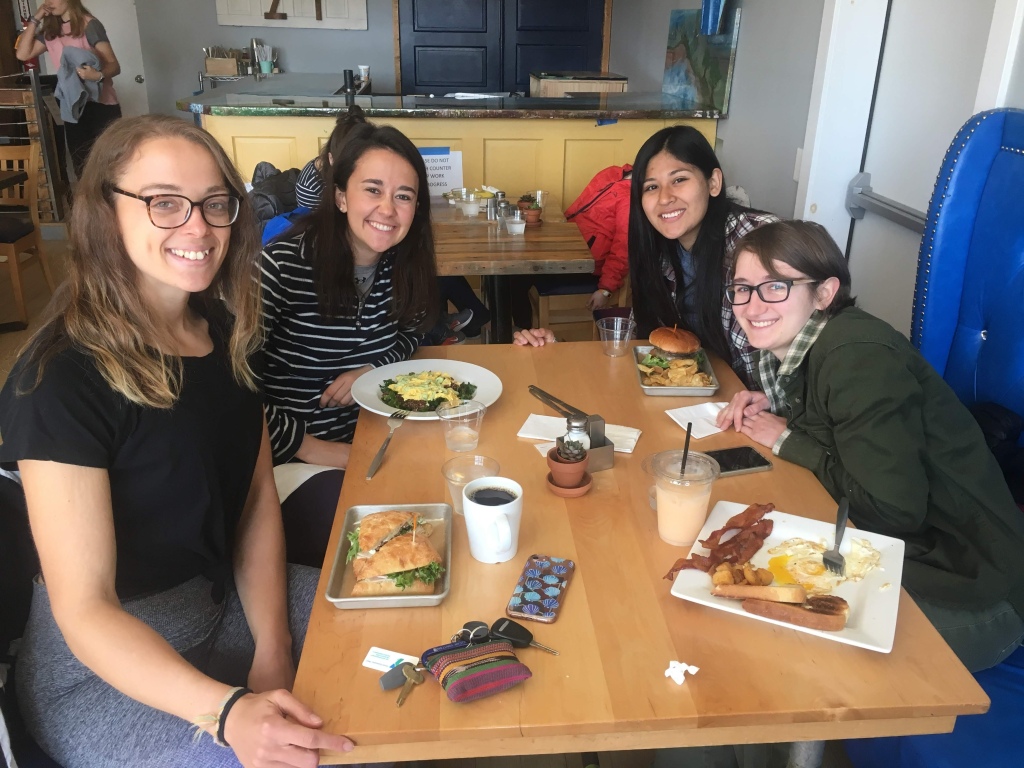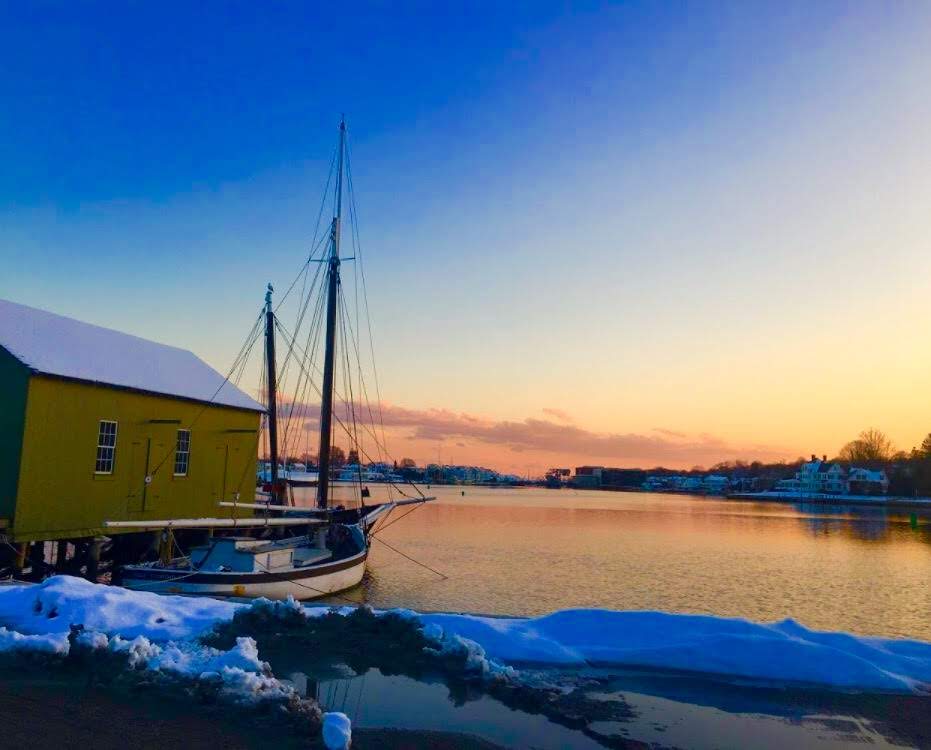By Hayden Gillooly (S’19)
Hayden Gillooly is an alum of Williams College, Class of 2021. She now works as the Assistant Director of Admissions for Overland Summers.
During a semester at Williams-Mystic, your house on Bruggeman Place becomes a home, and your small class a family. The Mystic Seaport campus becomes your backyard to frolic in on the way to class, and in the evenings at sunset. You will find solace sailing and kayaking in the Mystic River. And you may even find that downtown Mystic becomes a home. That your heart will sing as you bike across the bridge to your favorite coffee shop where you’ll write an essay intertwining perspectives from four disciplines you once thought were disparate. In the spring of 2019, I watched winter fade gracefully into summer through my window in Carr House overlooking Mystic Seaport, and felt myself grow each day.
What’s special about communal living as opposed to living in a dorm is that you and your housemates will get to know each other deeply because you share classes, adventures, and a home. This differs from a typical college semester in which you see your classmates in a single class, for a few hours each week. At Williams-Mystic, you’ll get to know all of the layers of your classmates—learning how to care for each other, through all of the ups and downs of a semester.
Communal living at Williams-Mystic is one of the things that stands out in making the program so extraordinary. In addition to being surrounded by like-minded students, brilliant professors, and traveling to some of the most beautiful places in the country—being able to come home at the end of the day to Bruggeman Place is quite magical. Each day at Carr, Mallory, Kemble, Albion, and Johnston houses, we were able to let our classroom learnings fold into dinner conversations and late-night chats.
You and your classmates will share dance parties, meals, and study sessions in both your home and in the classroom buildings. Since students take the same four classes: Literature of the Sea, Maritime History, Marine Policy, and either Oceanographic Processes or Marine Ecology, you and your classmates will be able to study and work together on projects. I remember one night before a big deadline for our Marine Policy final projects, my housemates and I sprawled across our living room reading policy briefs and helping each other to understand the nuances of the briefs. It felt collaborative, rather than competitive, as we worked as a team to grasp the concepts.
Our flights to our field seminars in Puerto Rico, California, and Louisiana were always early in the morning, meaning that we had to wake up around 2am to drive to the airport. The night before field seminars, my housemates and I kept our bedroom doors open while packing, and solicited input from each other on how many t-shirts and layers to bring. We felt a childlike excitement those nights as we anticipated our upcoming adventures. Our alarms would go off early in the morning, and we’d shuttle our big Williams-Mystic duffle bags downstairs together. I felt like a little kid on Christmas, eager to embark on our journey. In the pitch black, we’d all step into the bus and drive to the airport. By the end of the day, we’d be in a new place ready to explore together.
Each classmate brings a different perspective from their respective discipline to each class and field seminar. Unlike a class on your home campus, which may be geared towards students of a particular major, each Williams-Mystic class is filled with students across all different disciplines and backgrounds. This offers you the unique opportunity to consider each topic from multiple lenses. At Williams-Mystic, you’ll come to understand that we all bring something different to the table, and that having representation from the voices of all disciplines is essential in order to tackle the world’s most pressing issues. These issues may include studying indigenous rights, sea-level rise, and how biodiversity is impacted by climate change.
During “Whale Week,” we studied whales in each course. In Marine Policy, we examined the policies in place to protect whales worldwide; in Marine Ecology, we studied the ‘whale pump,’ and how whales are an integral part of their ecosystems. In Literature of the Sea, we read Herman Melville’s Moby Dick on the last wooden whaling ship in the world, The Morgan, which resides at Mystic Seaport. In History of the Sea, we read about the history of whaling voyages. It was special to see the strengths of each of my classmates shine as they discussed their perspectives.
And at the end of each day, you’ll go home with your classmates and cook in the kitchen while jamming to music and laughing. My three housemates and I could not have been more different, but we formed a unit. Each Sunday, we ventured downtown to a new restaurant to share brunch and reflect on the past week—something we always looked forward to. One particularly gorgeous Sunday, we used bikes from the Williams-Mystic bike fleet to head downtown. We crossed the river, huge smiles on our faces. The flowers were in bloom, and downtown was bustling with tourists visiting the Seaport.
Almost every day during my Williams-Mystic semester, I spent sunset at Mystic Seaport, watching the sky melt into bright oranges and reds against a backdrop of the sails of tall ships. I sat on the docks and listened to the Mystic River swell beneath me. One night, time got away from me while cooking dinner, and I forgot to go to the Seaport at sunset. However, three of my classmates texted me to inform me about the bright red sky, because they knew that I was a sunset enthusiast. I ran down Bruggeman Place and through the Seaport, catching the tail-end of a fiery sky. It’s a small anecdote, but it speaks to the depth with which my classmates really knew me from living, working, and adventuring alongside each other each day. I felt so heard, and so seen for who I was, and for the things that I was passionate about.
While discussing house norms and expectations with my housemates, I learned how to be a direct communicator. I learned how to compromise when our expectations differed, but we made it work anyway. I learned passion while seeing my classmates’ eyes light up during engaging conversations. And when my classmates and I saw all of the layers of each other—the beautiful, the messy—and embraced each other regardless, I learned love.
On a college campus, it’s easy for academics to feel all-consuming–like the biggest part of your identity. Students wear their backpacks everywhere, packed with textbooks and course packets. At Williams-Mystic, however, academics felt like a slice of who I was. I felt like the sum of my parts—a student, friend, sunset-chaser, writer, daughter, and adventurer. I learned about maritime science, history, literature, and policy during my Williams-Mystic semester—yes—but I also learned the power of listening intently to people. Of asking questions in our communities, and in the communities that we visit. Our professors placed value on our learning beyond the classroom, too. They knew—and instilled an understanding in us—that we could learn much, much more from the people and places around us than we ever possibly could from a textbook.







